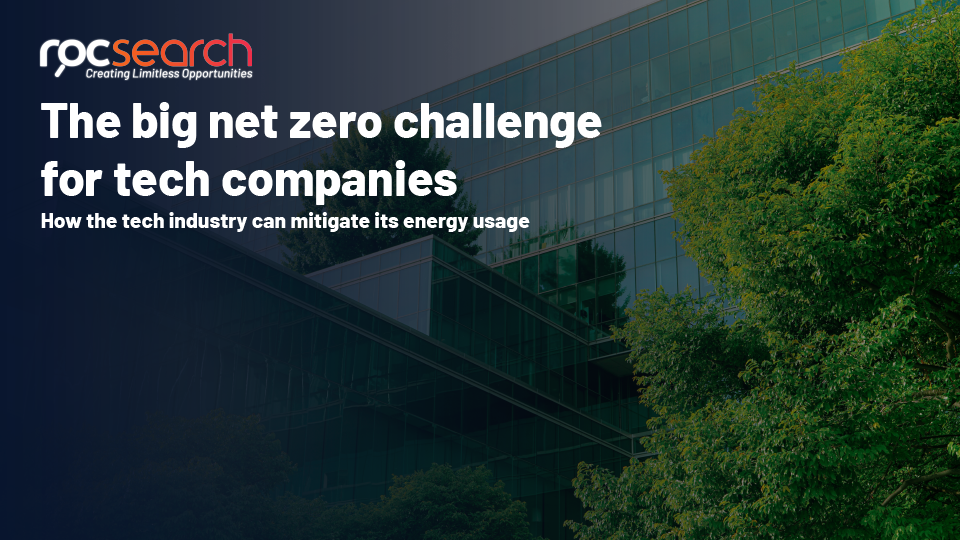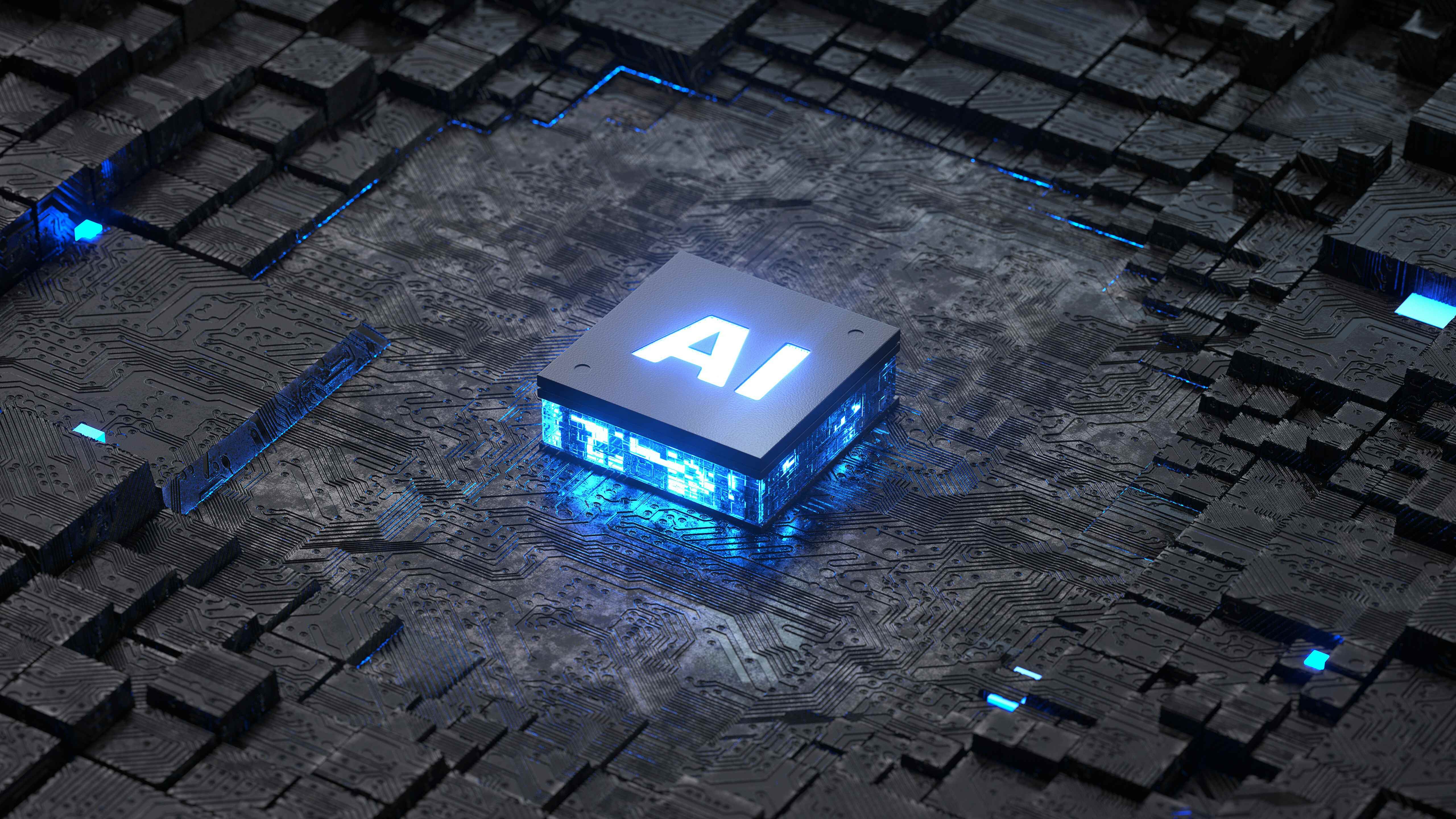
The big net zero challenge for tech companies
06 Jun, 202415 minutesEmerging technologies like generative AI have a dirty not-so-little secret: the scale and sp...

Emerging technologies like generative AI have a dirty not-so-little secret: the scale and speed of processing required uses staggering amounts of energy. In this era of companies setting themselves tough net zero targets, how can the tech industry mitigate its massive energy usage and actually reach those targets?
What’s the scale of the problem?
One of the biggest concerns is AI’s energy consumption, particularly with the rise of generative AI. Listen, we get it, ChatGPT arguably provides a better user experience than a standard Google search. Rather than presenting you with hundreds, thousands or even millions of search results, ChatGPT will give you one succinct, conversational answer to, well, whatever it is you want to know. That’s great. But we have to acknowledge the energy cost of these interactions with generative AI; some estimates suggest that ChatGPT interactions could consume as much power as 33,000 US households per day.[i] It’s a phenomenal – and downright scary – estimate.
We also have cryptocurrencies becoming increasingly mainstream while hoovering up loads of electricity. Bitcoin alone uses enough electricity to rank 27th among nations, ranking higher than Pakistan, which has a population of 235 million.[ii]
Bottom line, the technologies we love – or love to hate, depending on your viewpoint – are hugely energy intensive. And the problem is only set to get worse. According to the International Energy Agency, electricity consumption from data centres, AI and crypto could double by 2026.[iii] (Did we mention it was scary? It’s scary.)
Such massive growth in energy consumption is wildly out of step with the very public net zero targets that tech companies are setting themselves. So what can they do about this?
Green energy solutions
A big part of the solution obviously lies in reducing reliance on fossil fuels and transitioning to more renewable energy sources. In fact, tech companies are leading the way in renewable energy spending; in 2022, the tech industry accounted for 48% of all wind and solar power.[iv]
Looking ahead, we have exciting advances emerging in renewable energy, such as the development of bladeless wind turbines (which could, in theory, be used in urban and residential areas). Looking even further ahead, clean energy sources may include green hydrogen and nuclear fusion. The 2022 announcement that a nuclear fusion reaction had achieved ‘net energy’ – where the amount of energy generated exceeded the amount of energy required to power the reaction – was a major breakthrough in nuclear fusion. (Although we’re still realistically decades away from nuclear fusion powering our electricity grids.)
But how else might the technology sector meet net zero targets? It seems that carbon removal is a major avenue.
Carbon removal becomes a hot ticket
Carbon removal projects – where carbon dioxide emissions are ‘trapped’ and stored in a way that doesn’t affect the atmosphere – are increasingly becoming a necessary way for tech firms to meet their tough net zero targets.
Which is why we’re seeing more technology companies invest in carbon removal projects – including a consortium comprising Alphabet, Meta and others purchasing contracts to remove and store more than 510,000 tons of carbon to date.[v] In other words, tech companies are piling into the carbon removal industry in a big way. Microsoft alone has racked up more than 7.6 million purchases of carbon credits in the last four years, making it one of the largest buyers of carbon credits out there.[vi]
But how does carbon removal work?
Organisations buy carbon credits with carbon removal firms, with each credit representing the removal of one ton of carbon dioxide from the atmosphere. One of the ways of measuring carbon removal is through direct air capture (DAC) facilities – essentially, large factories that suck carbon dioxide out of the air. The carbon dioxide is then transported and permanently stored underground.
There’s also biological carbon capture, where the natural environment – largely, forests and oceans – sequester carbon dioxide from the atmosphere. In this way, reforestation projects provide another way to capture carbon.
Could AI be part of the solution?
While it’s easy to focus on the massive energy cost of AI, we should also acknowledge that AI will, in theory, play a positive role in mitigating the climate crisis. After all, AI excels at crunching masses of data and solving problems that would be too complex for humans to solve alone. By using AI to, say, better predict and manage energy usage, the technology can (in part) atone for its energy sins. We’ll have to watch this space.
[ii] Source: https://news.sky.com/story/bitcoin-mining-consumes-more-electricity-than-most-countries-study-suggests-12991456
[iv] Source: https://www.itpro.com/business/business-strategy/369897/tech-industry-vast-lead-in-green-energy-spending
[v] Source: https://finance.yahoo.com/news/tech-companies-bet-on-carbon-removal-startups-as-ai-tests-climate-goals-100026858.html?guccounter=1&guce_referrer=aHR0cHM6Ly93d3cuZ29vZ2xlLmNvbS8&guce_referrer_sig=AQAAALRtcEdW1cR15Plffa8MJJ5JkVtWKoTQXDnf4PW9MUXiMrcoR6Ns7p7Wx8wEB1qluQBcrnlJWwSJ1xthMkCtSAa-dz4sHdq79gG8llP_SM36twkzPaD5jDbCTPU18fpFn5cYNIRyD4d1BPWraBG9vJxE8bY8swJskHMeJ_Vs7bau




